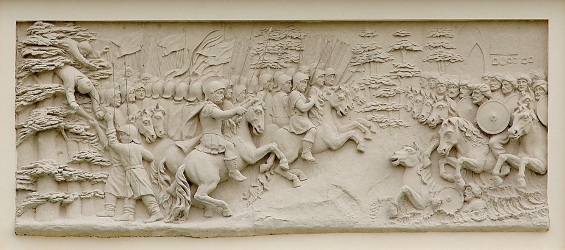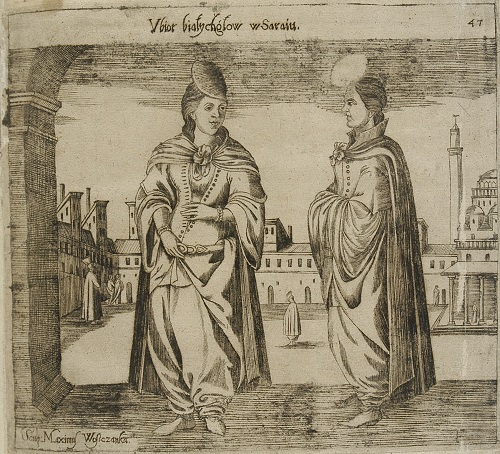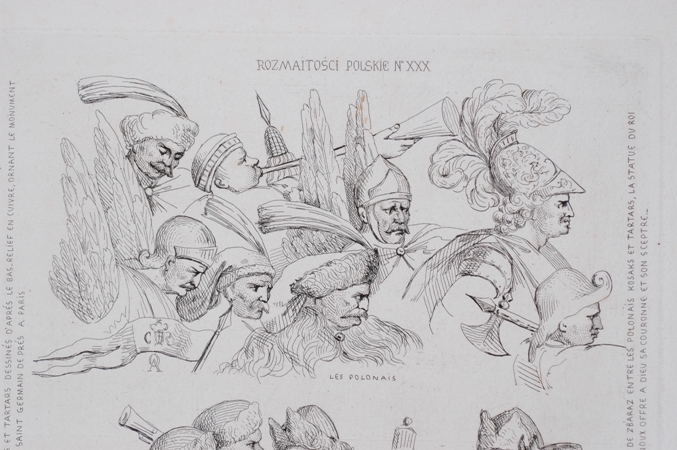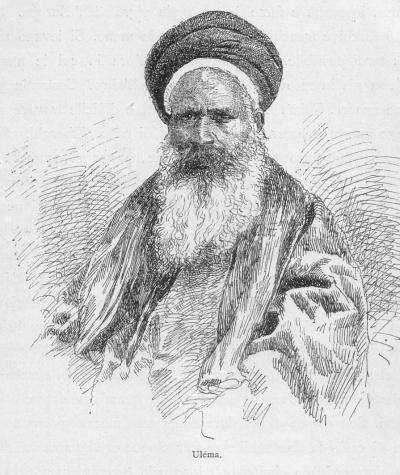The happy Sarmatia’s everyday life was full of fear: of pestilent air, famine, the strzyga demon, the gangs of unpaid soldiery and, finally of Tatar invasion. It was perfectly well known especially in Podolia and Ruthenia that the walls of Kamieniec were not a barrier against the Tatar troops ravaging the country with the ferocity of locusts and going as far as Lvov. The steppe warriors were not interested in anything except loot and people to be taken into captivity. At the fairs in Kaffa or Belgorod where thousands of prisoners were sold yearly, a good horse cost more than a man. Abducted young women were placed in harems (e.g. the lovely daughter of the Ukrainian Orthodox priest, Roxelana, became the beloved wife of the most prominent Turkish ruler Suleiman the Magnificent), and men were sent to the quarries or the galleys. “The Tatars are as impossible to defeat as the birds flying in the air” – these words of Hetman Stanislaw Żółkiewski who spent half his life fighting against the Horde perfectly reflected the problem which the 17th-century Commonwealth was facing.
“Where a Tatar passes, the grass will not grow” – was a popular saying. However, not every Tatar. Tatar settlements in Lithuania began as early as in the times of Vytautas. Jędrzej Kitowicz wrote: “They have their nest Lithuania, introduced by Vytautas (...), who brought dozens of Tatars families from the Crimean peninsula and settled them there, awarding them some land under hereditary law, which to this day they have”. In the second half of the 15th and in the 16th century, the Tatar settlement was more spontaneous and Tatar villages emerged in different parts of the country. In Lithuanian Severia, a little vassal Tatar state (Jagoldai) was even created which survived to 1494. The Tatar population living in Lithuania and Podlasie was called Muslims; they originated from the Golden Horde refugees, the Volga and Dagestan steppe Tatar tribes, and the prisoners of Lithuanian-Tatar and Polish-Turkish wars. The last great emigration (1637) consisted of the Budjak Horde Tatars who rebelled against the Crimean Khan and asked the Commonwealth for protection. The descendants of Tatar Knyaz, Bey and Mirza families, as well as of former Lithuanian-Tatar soldiers were given the same rights as the Polish-Lithuanian nobility and granted lands. The prisoners without citizenship and nobility lived mainly in the compact urban districts of Lithuania. The main barrier to the acquisition of full rights in the Commonwealth was a foreign ethnic group and a non-Christian religion. Although in 1689 the Tatars were given the right to buy acres, until the end of the Commonwealth they did not obtain full nobility rights if they remained Muslims. Generally, in the Polish-Lithuanian state they enjoyed religious tolerance as Christianization was hardly taken up. Tougher laws concerning the Tatars were in force in the Crown of the Kingdom of Poland (restrictions on building temples), although the 1557 and 1569 Sejms allowed the construction of mosques and the training of imams. The fusion of Tatar population with the adoptive homeland intensified in the second half of the 17th and the 18th centuries. The professional military service was the surest way for Tatars to achieve prestige and social advancement, the more so as a civil service career was not available to them.
Widely known were the Lipka Tatars (the former name of Tatars settled in the Grand Duchy of Lithuania and the Kamieniec region) who in the second half of the 17th century served in the Polish army (15 regiments) but during the war with Turkey most of them went over to Sultan Mohammad IV. With time, they returned to King Jan III Sobieski and henceforth faithfully served the Commonwealth. An example may be Mirza Samuel Krzeczowski, a royal army rotmistrz, and a Tatar Lithuanian lieutenant. One of the participants in the Lipka Tatars’ revolt, he was granted amnesty in 1676 and by the Royal Decree of 1679 he received the villages Kruszyniany, Luzany and Nietupa in Podlachia. In 1683, he took part in the Vienna expedition with his squadron. According to the tradition, he saved Jan III Sobieski’s life at Parkany. In return, he was awarded the rank of Colonel, and the King in person visited him in Kruszyniany on his way to the Grodno Sejm in 1688.
Over time, the Polish Tatars adopted the language and culture of the Polish nobility, but retained their Muslim religion, whose rules they strictly followed. Tatar squadrons existed in the era of the Napoleonic Wars, during the November Uprising and during the Second Commonwealth of Poland. In 1919, the Tatar leaders issued a proclamation, which read: All the faithful followers of the Prophet, to arms! Our old Tatar cavalry regiment of the Commonwealth is renascent and invites all the faithful living in Poland and Lithuania to its ranks under the green banner of the Prophet. The Mustafa Achmatowicz Tatar Cavalry Regiment was famous for its bravery during the 1920 war, and the 13th Tatar Squadron of the Vilnius Cavalry Regiment fought in the September Campaign.



